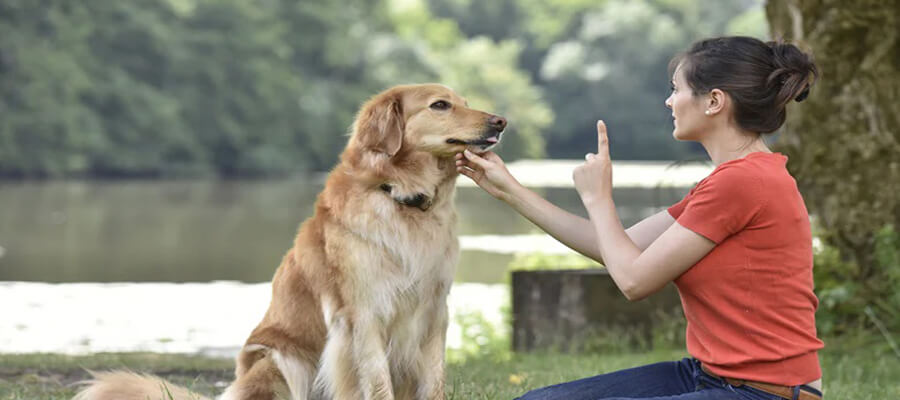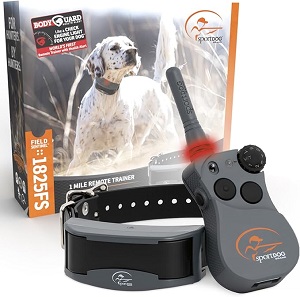
Training a Senior Dog: What You Should Know
Training a Senior Dog: Essential Tips and Considerations
Training a Senior Dog: What You Should Know
Training isn’t just for puppies—senior dogs can benefit significantly from continued learning and training as well. Whether you're adopting an older dog or hoping to teach new tricks to a longtime companion, training a senior dog can provide mental stimulation, strengthen your bond, and help manage age-related challenges. While there may be unique considerations due to their age, senior dogs are still capable of learning and thriving in a structured environment.
In this guide, we’ll explore the benefits, challenges, and effective strategies for training an older dog, ensuring that your senior pet can live a happy, fulfilled life.
1. Why Training a Senior Dog is Important
Training a senior dog may seem unnecessary to some, but there are numerous reasons why it’s essential. From enhancing cognitive function to improving behavior and providing necessary mental stimulation, training benefits your dog’s health and happiness.
Essentials for Your Newly Adopted Pet
Welcoming a shelter pet into your life is a beautiful journey. Here are some handpicked items to help your new friend feel safe, loved, and right at home:
1.1. Mental Stimulation
Just like humans, dogs need mental stimulation to remain sharp as they age. Teaching new commands or refreshing old ones helps keep their brains active, combating boredom and the potential for cognitive decline. Simple puzzles, obedience training, or even scent work can provide a fun, mentally engaging challenge.
1.2. Strengthening Your Bond
Training a senior dog, especially if they're newly adopted, can help strengthen your bond. Even long-time companions benefit from training sessions as a way to reinforce the relationship, trust, and communication between you. Training is a positive experience that can make older dogs feel more secure in their environment.
1.3. Adapting to New Challenges
Older dogs often face physical changes such as arthritis, hearing loss, or vision impairment. Training allows you to adapt your dog's routine and behavior to accommodate these changes. For instance, teaching hand signals for a dog with hearing loss or modifying commands to suit a dog with limited mobility ensures they remain comfortable and confident.
2. Challenges of Training a Senior Dog
While senior dogs are capable of learning, there are some challenges that first-time senior dog owners may encounter. Understanding these obstacles helps to create an effective training plan tailored to your older dog's specific needs.
2.1. Physical Limitations
Senior dogs may suffer from joint pain, arthritis, or decreased stamina, which can make certain physical tasks difficult. Training must be adapted to ensure it doesn’t exacerbate any physical discomfort. Exercises that involve too much jumping or running may need to be substituted with gentler activities.
2.2. Slower Learning Process
Older dogs may take longer to learn new skills compared to younger ones. This isn’t because they are less intelligent but rather due to slower processing and retention. Patience and consistency are essential when working with senior dogs, as they may need extra time and repetition to master commands.
2.3. Pre-existing Habits
Senior dogs may come with deeply ingrained habits, some of which may not be ideal. Breaking these habits can be challenging since they’ve had years to develop them. Whether it’s pulling on the leash or begging for food, correcting long-standing behaviors will take time and effort.
2.4. Health Conditions
Senior dogs are more likely to have health issues such as hearing or vision loss, cognitive decline (such as canine cognitive dysfunction), or chronic pain. These factors can affect how they respond to training. Be prepared to make accommodations, such as using visual cues instead of verbal commands for dogs with hearing loss.
3. Effective Training Techniques for Senior Dogs
When training a senior dog, it’s important to be mindful of their age, health, and comfort levels. Tailoring your training approach ensures that they are learning in a way that suits their needs and capabilities.
3.1. Focus on Positive Reinforcement
Positive reinforcement is a highly effective training method, particularly for older dogs who may be less responsive to corrective techniques. Reward your dog with treats, praise, or toys whenever they successfully follow a command. Positive reinforcement helps keep training enjoyable and encourages your dog to continue learning.
- High-Value Treats: Use treats that are easy for your senior dog to chew and digest, especially if they have dental issues. Soft treats like small pieces of chicken or cheese work well as rewards.
- Verbal Praise: In addition to treats, senior dogs often respond well to verbal praise or physical affection (such as petting or belly rubs). This helps to reinforce a positive experience.
3.2. Keep Training Sessions Short
Senior dogs can tire more quickly than younger dogs, so it’s important to keep training sessions short and manageable. Aim for 5-10 minutes of training at a time, spread out over the day. This approach prevents mental and physical fatigue, ensuring that your dog remains engaged and enthusiastic.
3.3. Use Hand Signals or Visual Cues
If your dog is experiencing hearing loss, it’s helpful to use hand signals or other visual cues to communicate. Pair these signals with verbal commands in the beginning, and over time, your dog will respond to the visual cues alone.
- Sit: Raise your hand with your palm facing up to signal the "sit" command.
- Come: Extend your arm outward and then bring it toward your chest to signal your dog to come.
3.4. Modify Physical Commands
Senior dogs with mobility issues may not be able to perform certain physical commands, such as jumping or running. Modify training to focus on gentler commands, such as “down,” “stay,” or “heel,” which don’t put unnecessary strain on their joints.
- Gentle Commands: Teach commands that your dog can comfortably perform, like walking at a slow pace on the leash or gently lying down.
- Balance Exercise with Rest: Training should always be balanced with plenty of rest, allowing your senior dog to recharge without overexertion.
4. Reinforcing Old Commands
Many senior dogs already know basic commands, but over time, they may become less responsive to them. Reinforcing old commands is a great way to remind your dog of what they already know and ensure continued obedience.
4.1. Revisiting the Basics
Start by reinforcing the basic commands your dog likely learned in their earlier years, such as “sit,” “stay,” and “come.” Keep the training sessions positive and relaxed, offering plenty of praise and rewards for success.
- Consistency: Use the same cues (verbal or hand signals) for each command to avoid confusion.
- Frequent Practice: Practice old commands regularly to keep them fresh in your dog's mind.
4.2. Leash Training
Senior dogs that have developed poor leash manners can benefit from retraining to improve their walking behavior. Refresh leash training by reinforcing loose-leash walking and discouraging pulling.
- Use a Harness: Consider switching to a harness if your senior dog has neck or breathing issues, as this can reduce strain during walks.
- Reward Calm Walking: Reward your dog for walking calmly by your side. If they pull, stop walking and wait for them to return to your side before continuing.
5. Mental Stimulation for Senior Dogs
Mental stimulation is crucial for senior dogs, as it helps prevent cognitive decline and keeps them engaged. Training exercises, puzzles, and interactive toys can provide excellent mental stimulation while also offering enrichment and fun.
5.1. Puzzle Toys
Puzzle toys that challenge your dog to work for treats are a great way to keep their mind sharp. These toys encourage problem-solving and provide entertainment during quieter moments.
- Interactive Treat Dispensers: Toys that dispense treats when solved can keep your senior dog mentally engaged for extended periods.
5.2. New Tricks
Even senior dogs can learn new tricks! Teaching a simple new trick like “shake” or “spin” can boost your dog’s confidence and provide mental stimulation.
- Scent Work: If your dog enjoys using their nose, try teaching them simple scent work games where they have to find a hidden treat or toy. This is mentally enriching without being physically demanding.
6. Health Considerations During Training
When training a senior dog, it’s essential to keep their health in mind. Older dogs may have special dietary, physical, or medical needs that affect their ability to train.
6.1. Veterinary Check-ups
Before starting a training program with your senior dog, it’s a good idea to consult with your veterinarian. Regular check-ups ensure that your dog is healthy enough to engage in training and help identify any health concerns that may need accommodation.
6.2. Monitor for Pain or Fatigue
Watch for signs of discomfort or fatigue during training sessions. If your dog shows signs of pain, such as limping or reluctance to move, take a break and consult your vet. Gentle training exercises and plenty of rest can help manage pain related to aging.
Conclusion
Training a senior dog can be a rewarding experience, offering mental stimulation, reinforcing good behavior, and providing an opportunity to bond with your dog. While it comes with its own challenges, such as physical limitations and slower learning, patience and understanding will go a long way in helping your older dog succeed. With a focus on positive reinforcement, short training sessions, and tailored commands, you can help your senior dog continue to learn and thrive well into their golden years.
Affiliate Products
We may earn a small commission when you shop through our links — it helps us keep sharing love and care for every dog out there, at no extra cost to you.
Up to 75% Discount

Dog Collar with Health Monitoring
BUY NOW »
Up to 55% Discount

Luxury Faux Furhuge Napping Bed
BUY NOW »

